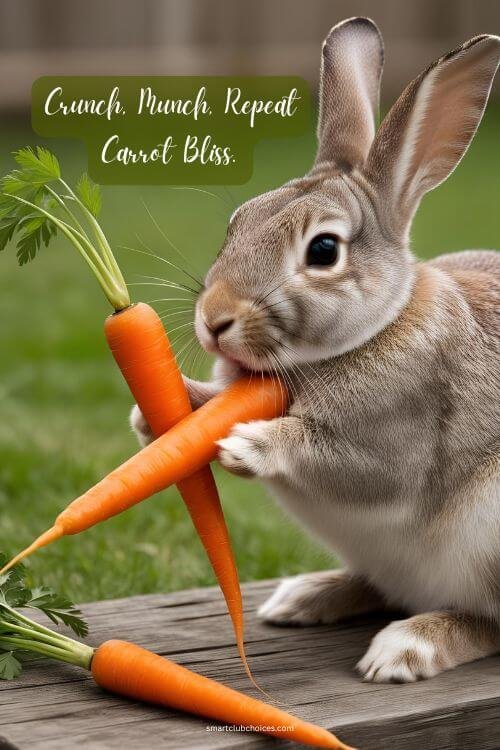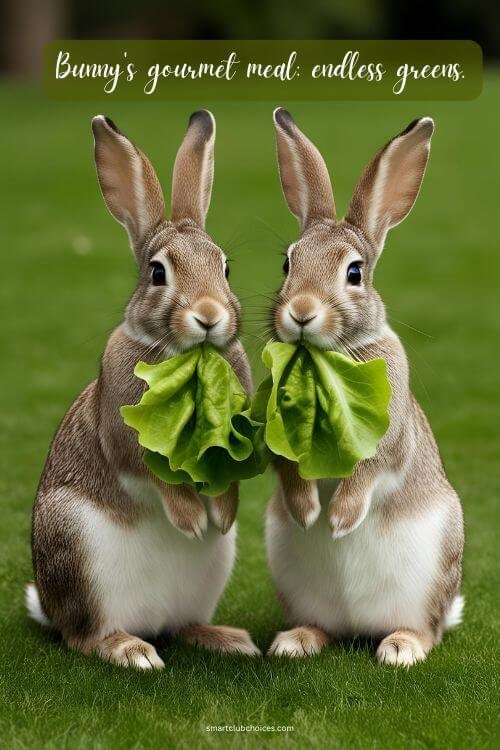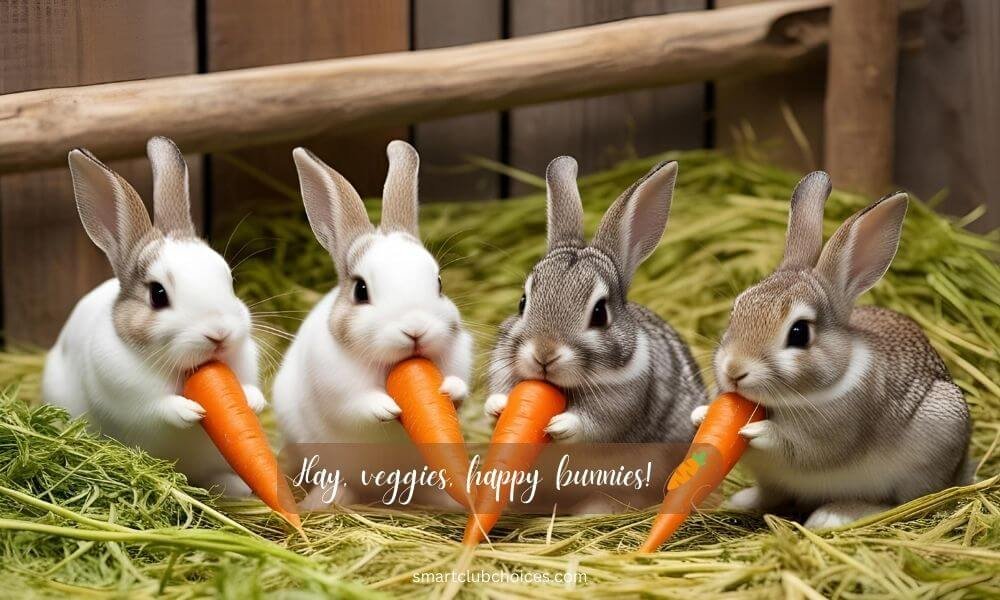What Do Rabbits Eat? A Complete Guide to Rabbit Nutrition
Rabbits are the ultimate foodies of the animal kingdom. With their twitching noses and insatiable appetites, they’re always on the hunt for their next delicious meal.
But feeding your bunny isn’t as simple as tossing them a carrot and calling it a day (thanks, Bugs Bunny, for the misinformation).
A rabbit’s diet is a delicate balance of hay, veggies, pellets, and the occasional treat.
Get it right, and your bunny will be hopping with joy. Get it wrong, and you might have a grumpy (or worse, unhealthy) furball on your hands.
So, let’s dive into the world of rabbit nutrition and answer the age-old question: What do rabbits eat?
Table of Contents
(1) The Foundation of a Rabbit’s Diet – Hay, Hay, and More Hay
Why Hay is the MVP
If rabbit nutrition were a movie, hay would be the star of the show. It’s not just a snack—it’s the cornerstone of a healthy rabbit diet. Here’s why:
- Digestive Health: Rabbits have sensitive digestive systems, and hay keeps everything moving smoothly. Think of it as the fiber-packed superfood your bunny can’t live without.
- Dental Care: Rabbits’ teeth grow continuously, and chewing hay helps wear them down naturally. No hay = overgrown teeth = big problems.
- Endless Munching: Rabbits love to graze, and hay allows them to nibble all day long, just like they would in the wild.
Types of Hay
Not all hay is created equal. Here’s a quick guide:
- Timothy Hay: The gold standard for adult rabbits. It’s high in fiber and low in calories.
- Orchard Grass: A good alternative to timothy hay, especially if your bunny is picky.
- Alfalfa Hay: High in calcium and protein, this hay is best for young bunnies (under 6 months) or nursing mothers.
How Much Hay?
The answer is simple: unlimited. Your bunny should have access to fresh hay 24/7. Fill their hay rack, scatter it in their play area, or stuff it in a toy for some extra enrichment.

(2) Veggies – The Colorful Side of Rabbit Nutrition
Why Veggies Matter
While hay is the main course, veggies are the delicious side dish that adds variety and nutrients to your bunny’s diet. They’re packed with vitamins, minerals, and hydration, making them a must-have for a healthy bunny.
Bunny-Approved Veggies
Here are some rabbit-safe veggies to add to your bunny’s menu:
- Leafy Greens: Romaine lettuce, kale, spinach, arugula, and cilantro.
- Crunchy Veggies: Bell peppers, celery, zucchini, and cucumber.
- Herbs: Parsley, basil, mint, and dill.
How Much Veggies?
Aim for about 1-2 cups of fresh veggies per day for an average-sized rabbit. Introduce new veggies slowly to avoid upsetting their tummy, and always wash them thoroughly.
Veggies to Avoid
Not all veggies are bunny-friendly. Avoid starchy or sugary options like potatoes, corn, and iceberg lettuce (it’s basically crunchy water with no nutritional value).
(3) Pellets – The Supplemental Snack
What Are Pellets?
Pellets are like the multivitamin of the rabbit world. They’re a concentrated source of nutrients that complement your bunny’s hay and veggie intake.
Choosing the Right Pellets
- Timothy-Based Pellets: Ideal for adult rabbits. Look for pellets with at least 18% fiber and no added seeds, nuts, or colorful bits (those are just junk food in disguise).
- Alfalfa-Based Pellets: Best for young bunnies or pregnant/nursing rabbits due to their higher protein and calcium content.
How Much Pellets?
Pellets should be a small part of your bunny’s diet. For an average-sized adult rabbit, 1/4 cup per day is plenty. Overfeeding pellets can lead to obesity and other health issues.
(4) Treats – The Fun (But Tricky) Part
What Makes a Good Treat?
Treats are a great way to bond with your bunny and reward good behavior, but they should be given in moderation. Here’s what to look for:
- Natural and Healthy: Fresh fruit (like apple slices or berries) or small pieces of carrot make great treats.
- Low in Sugar: Too much sugar can upset your bunny’s digestive system and lead to weight gain.
How Much Treats?
Treats should make up no more than 5% of your bunny’s diet. A small piece of fruit (about the size of your thumbnail) once or twice a week is plenty.
Treats to Avoid
Avoid store-bought treats with added sugar, artificial colors, or preservatives. Also, steer clear of human snacks like bread, crackers, or cereal.
(5) Water – The Unsung Hero
Why Water is Essential
Hydration is key to keeping your bunny healthy and happy. Water helps with digestion, regulates body temperature, and keeps your bunny’s organs functioning properly.
How to Provide Water
- Water Bottle or Bowl: Some bunnies prefer bottles, while others like bowls. Offer both and see which your bunny prefers.
- Fresh and Clean: Change your bunny’s water daily and clean their bottle or bowl regularly to prevent bacteria buildup.
Signs of Dehydration
If your bunny isn’t drinking enough water, they might become lethargic, lose their appetite, or have dry skin. If you notice these signs, consult your vet.

(6) Conclusion: A Balanced Diet for a Happy Bunny
Feeding your rabbit might seem complicated at first, but once you get the hang of it, it’s actually pretty simple.
Just remember the golden rule: hay is the foundation, veggies are the fun addition, pellets are the supplement, and treats are the occasional indulgence.
By providing a balanced diet, you’ll ensure your bunny stays healthy, happy, and full of energy.
And let’s be honest—there’s nothing cuter than watching your bunny munch on a fresh piece of cilantro or binky around the room after a satisfying meal.
So, go ahead and spoil your bunny (within reason, of course). After all, a well-fed bunny is a hoppy bunny!








